
Every person is unique!
Our experienced team will be happy to advise you in detail and free of charge on all matters relating to your health. Book your consultation appointment now:
Bring menopause under control: Vital mushrooms as a herbal remedy for hot flashes & Co.
December 6, 2022
Dipl.-Biol. Dorothee Ogroske et al.
The term “menopause” describes the transition from the fertile to the infertile phase of life in women. Typical complaints during this time are, for example, hot flashes and sweating. However, in the course of this article we will also talk about the many other symptoms.
Finally, with the vital mushrooms we will introduce you to a herbal remedy against hot flashes and co. Our message here is: women can experience their menopause relatively carefree if they know the causes as well as the remedies for their problems.
What is menopause?
Menopause in women is also known as the “climacteric” in technical jargon. During this time, which is roughly between the ages of 45 and 60, women experience the familiar menopausal symptoms. Interestingly, not all women suffer from them equally. Thus, 20% report only mild symptoms. 40%, on the other hand, report moderate and 30% even strong to very strong complaints. Women in this phase of life often experience very similar circumstances to their own mothers.
Menopausal complaints/symptoms in women
- Women report the following symptoms during their menopause:
Hot flushes and sweating (70%) - Palpitations, cardiovascular problems
- nervous tension
- Mood swings (aggression, depressive mood, panic: 70-90%)
- Lack of motivation, loss of performance
- dry mucous membranes in the vagina, eyes, bladder, nose, mouth and digestive tract
- Decreasing libido
- Sleep disorders, tiredness (50%)
- Forgetfulness, concentration problems (65%)
- Dizziness
- Water retention
- Weight gain, especially abdominal fat (60%)
- Bladder weakness
- Joint pain (50%)
- Osteoporosis
 In addition to these hormone-related phenomena, it is always important to consider the psychological challenges during menopause. The transition of the body from the fertile to the infertile years of life radically changes the female self-image at the same time. Often, this phase of life also includes serious changes in life circumstances, such as the children moving out. Each woman must manage this transition from one phase of life to the next in her own way. How much strength this costs them varies greatly from individual to individual.
In addition to these hormone-related phenomena, it is always important to consider the psychological challenges during menopause. The transition of the body from the fertile to the infertile years of life radically changes the female self-image at the same time. Often, this phase of life also includes serious changes in life circumstances, such as the children moving out. Each woman must manage this transition from one phase of life to the next in her own way. How much strength this costs them varies greatly from individual to individual.
In this time of upheaval, vital mushrooms can provide valuable assistance in many ways. They smooth the waters on a psychological level, but also address physical discomfort. Some can only alleviate them. Other symptoms they even merge out completely. We will go into more detail about the individual medicinal mushrooms and their effects in the course of this article.
Can menopause be "measured"?
From a medical point of view, the diagnosis of “menopause” depends on two factors:
- There had been no menstruation for over a year.
- The hormone levels change so that the FSH and LH levels in the blood are elevated.
A change in hormone balance can be detected, for example, by means of a saliva test. Interestingly, men and women basically have the same hormones. However, in men there is ten times more testosterone than estradiol (an estrogen), while in women the ratio is about six to one.
Traditional Chinese Medicine (TCM) has a slightly different view of menopause, but does not contradict our Western understanding of the underlying physiological processes. According to TCM, one of the main problems of menopause is decreasing kidney energy. This is important for a woman’s fertility at a younger age. If complaints occur in the course of menopause, they are primarily caused by the decreasing kidney energy and a shift in the balance of yin and yang forces.
What exactly happens during menopause?
Towards the end of the fertile years, the ovaries switch their hormone production. This happens very slowly and therefore takes several years. Overall, the level of sex hormones drops by about 90% during this time. At first, progesterone becomes less. Later, the estrogen level drops. Due to this conversion process, the period eventually stops completely. During the fertile years, progesterone and estrogen inhibit the production of FSH and LH in the pituitary gland. As their levels now fall, FSH and LH are henceforth produced in greater quantities.
What are the phases of menopause?
Experts divide menopause into three phases altogether, with menopause itself referring to the event of the last spontaneous menstruation. This occurs on average around the age of 51.
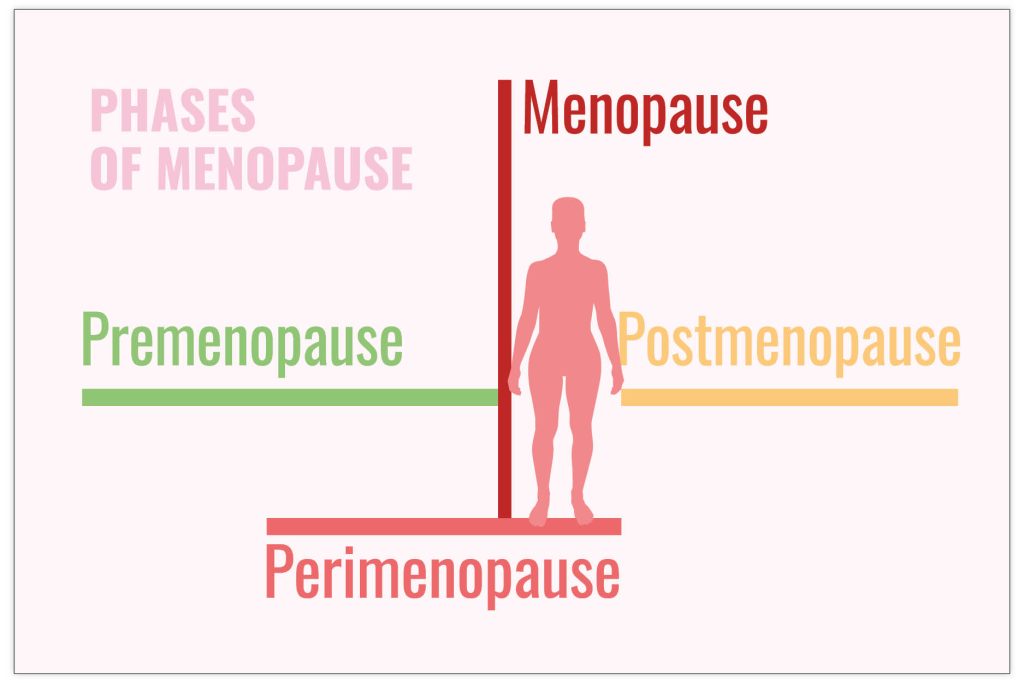
Premenopause begins much earlier and is characterized by irregular menstrual periods of varying intensity. This can be accompanied by psychological complaints such as irritability. The whole process can take five to ten years. Officially, premenopause ends with the last bleeding, i.e. menopause.
Somewhat later, but still parallel to premenopause, the phase of perimenopause sets in. This lasts about six years and ends one year after the last menstrual period. During perimenopause, women experience typical menopausal symptoms and symptoms. Experts summarize this complex of physical manifestations under “climacteric syndrome”. During this phase, hormones literally ride a roller coaster: while progesterone levels off at a relatively low level, estrogen fluctuates up and down. Fortunately, an all-natural remedy alone can help with hot flashes and other symptoms. It doesn’t have to be synthetic hormones.
Postmenopause joins perimenopause. The female body has now adjusted to the new balance of hormones, which is why most complaints subside again.
What is the role of estrogens in menopause?
Two hormones play a central role in the female cycle: estradiol and progesterone.
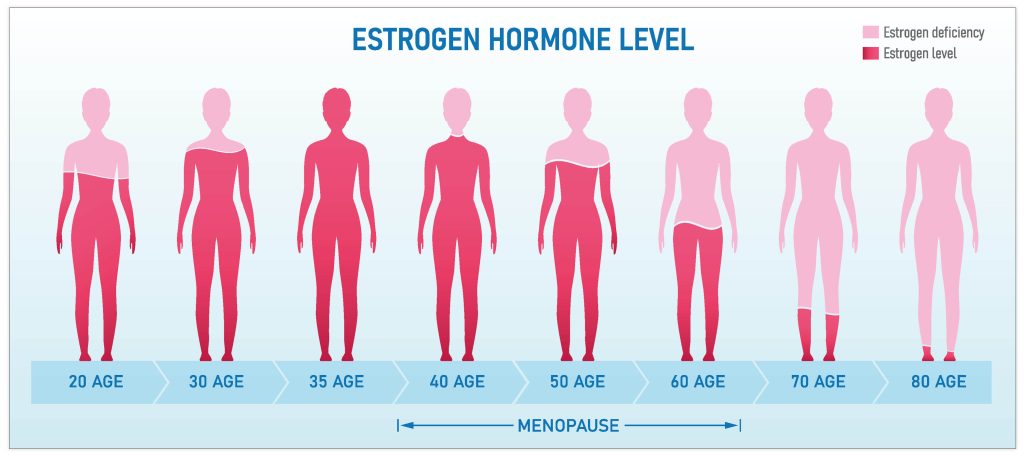
Estradiol is the most potent estrogen. It is formed in the follicles and is responsible for egg maturation and ovulation as well as the build-up of the endometrium in the first half of the cycle. In addition, it also helps protect the function of the heart and brain and maintain bone density.
Another estrogen is estriol. It is increasingly produced during pregnancy and is the so-called “mucosal estrogen”, as it promotes the rebuilding and proper functioning of the mucous membranes in the vagina, bladder, gastrointestinal tract, mouth, nose and eyes. Overall, it has a weaker effect than estradiol.
Finally, there is the estrone. This estrogen does not play a major role before menopause, but becomes increasingly important as estradiol production declines. Estrone results from a transformation of anrdogens (steroid hormones: androstenedione, DHEA), which takes place mainly in the fatty tissues of the abdomen, chest and hips. This allows the body to ensure a residual level of estrogens even after menopause.
Overweight women often have relatively high estrogen levels even after menopause due to estrone from fat cells. Here some vital mushrooms can help, which support the fat metabolism and thus a weight reduction. This reduces the risk of so-called estrogen dominance.
What is the role of progesterone?
Progesterone is the “pregnancy hormone” and is mainly produced by the corpus luteum in the second half of the cycle. Another production site is the adrenal cortex.
Its essential function is to enable the egg to implant in the endometrium. Later, progesterone is also produced by the placenta itself. Its overall effect can be described as relaxing, sedative, anti-anxiety and draining.
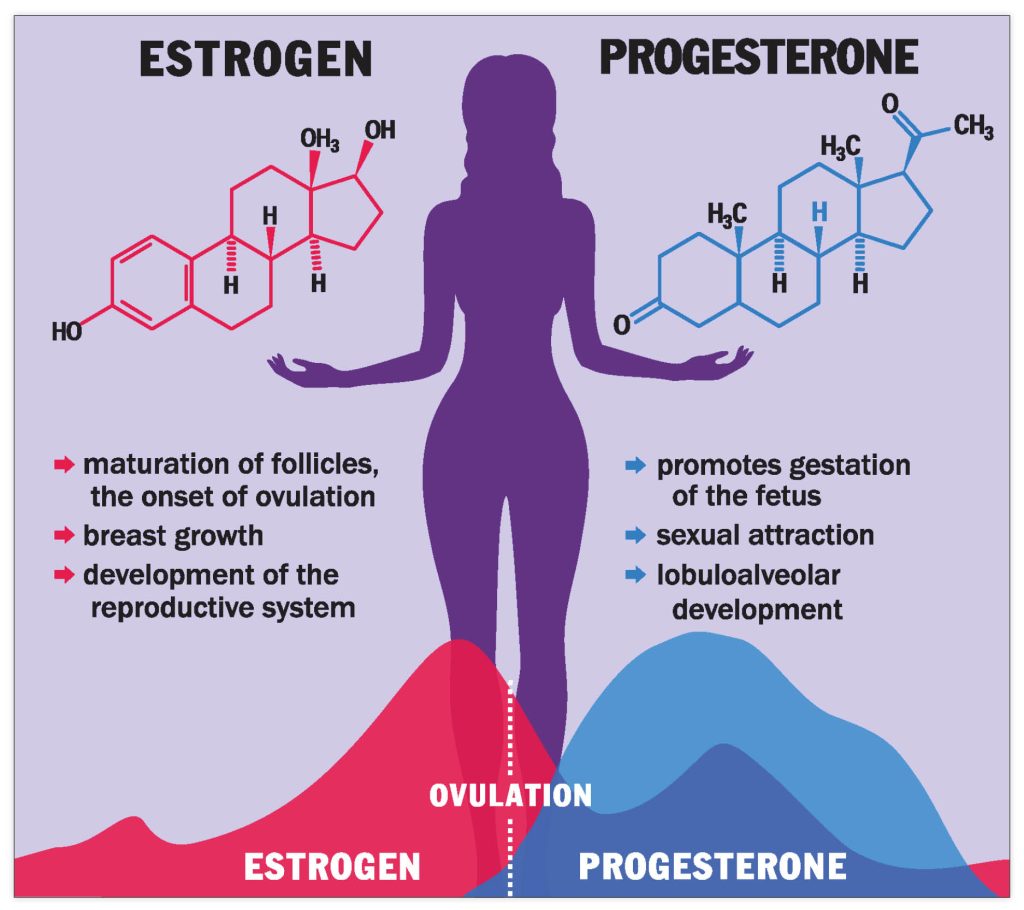
A drop in progesterone levels is one of the first changes in premenopause. This occurs long before estrogen levels begin to decline. As a result, the so-called “estrogen dominance” occurs.
What's the deal with estrogen dominance?
Estrogens cause growth processes, fat and water retention in the body, among other things. Progesterone is the counterpart hormone, which controls such processes. What is important here is not the absolute level in each case, but the ratio of the two hormones to each other. As mentioned, this balance shifts in favor of estrogen during premenopause. Estrogen dominance occurs, which is responsible for some menopausal symptoms in women. A herbal remedy for hot flashes and other manifestations of estrogen dominance must therefore always influence the hormonal balance. Some vital mushrooms such as cordyceps and reishi are predestined for this purpose.
In addition to the menopause, stress also upsets the hormonal balance. Since both progesterone and the “stress hormone” cortisol are formed in the adrenal cortex from the same parent substance, the two depend on each other. Thus, if cortisol is produced more under stress, the progesterone level automatically decreases. This can further exacerbate an already existing estrogen dominance.
Symptoms of estrogen dominance
Typical indications of estrogen dominance are:
- Water retention and bloating
- Breast sensitivity (tense mammary glands)
- irregular and heavy bleeding
- Cysts and fibroids
- depressive mood, irritability and anxiety, panic attacks
- Sleep disorders, nightmares
- Premenstrual syndrome (PMS)
- decreased libido
- Fat accumulation (hips, thighs!)
- Migraine
- Tumors of the breast, ovaries and uterus
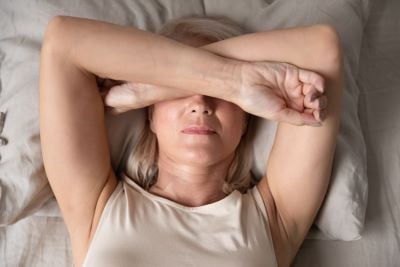
Natural remedies for estrogen dominance
Fortunately, we can promote estrogen excretion with natural remedies, thus counteract estrogen dominance in a natural way. A vegetarian diet is always helpful in this context. Experts also recommend taking probiotics and three to four tablespoons of wheat bran per day. Prebiotic mushroom powder, for example from Reishi or Pleurotus, also supports the body in the excretion of estrogen.

Every person is unique!
Our experienced team will be happy to advise you in detail and free of charge on all matters relating to your health.
Excursus: Androgens
What happens in postmenopause?
In postmenopause, a new hormonal balance has been established. In the course of this, the strongly fluctuating symptoms of menopause recede. However, estrogen levels are now permanently lower than during the fertile years of life. That is why the protective effect of estrogens, for example, on the cardiovascular system, bones and joints is also reduced. Skin problems, bladder infections and vaginal dryness, loss of libido now occur more frequently.
Which vital mushrooms help with menopausal symptoms?
Vital mushrooms are known to have adaptogenic, or balancing, effects. They always regulate body functions towards a natural balance. This is a very valuable aid, especially during menopause with its fluctuations.
Cordyceps
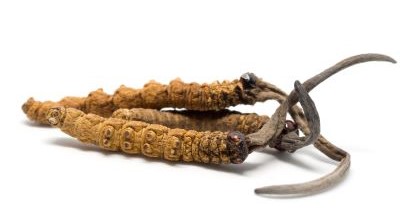 In TCM, cordyceps is popular for menopausal symptoms because it strengthens kidney energy. Thus, it relieves both hot flashes and cold symptoms. The latter include, for example, infections in the urogenital tract, which according to Asian teachings are a symptom of too much cold. Cordyceps strengthens kidney yang and thus has a warming effect on the urogenital tract, thus promoting blood circulation.
In TCM, cordyceps is popular for menopausal symptoms because it strengthens kidney energy. Thus, it relieves both hot flashes and cold symptoms. The latter include, for example, infections in the urogenital tract, which according to Asian teachings are a symptom of too much cold. Cordyceps strengthens kidney yang and thus has a warming effect on the urogenital tract, thus promoting blood circulation.
Scientific studies have also found an immunomodulatory effect of cordyceps. It thus strengthens the body’s defenses and counteracts possible infections.
Other research shows that the vital mushroom promotes the release of steroid hormones, especially estrogen and testosterone. It compensates for low estrogen levels, for example, by releasing 17-beta estradiol. As a result, among other things, sexual desire increases again.
Due to its stimulating influence on the adrenal gland, cordyceps improves stress resistance. It regulates the release of the stress hormone cortisol and therefore has a relaxing and calming effect. At the same time, it also reduces fatigue by boosting energy production and thus activating the body in general.
Finally, cordyceps is popularly used as a natural antidepressant. Its mode of action is similar to that of the artificial MAO (monoamine oxidase) inhibitors. It inhibits the natural breakdown of the happiness hormone serotonin, which contributes to a better mood in the long term.
Reishi
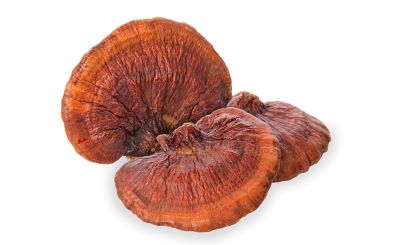 Reishi is a very important medicinal mushroom that has a tonic effect. In Asian medicine, it is fondly called the “mushroom of eternal life”. Its spectrum of action is very diverse and therefore covers some phenomena that may occur during menopause. For example, it has a vegetative balancing effect, which predestines it as a natural remedy for hot flashes, inner restlessness as well as insomnia. Its ability to regulate thyroid function is also particularly valuable. During the hormonal upheaval phase of menopause, the thyroid gland is often misregulated. This can result in symptoms such as palpitations, nervousness or lack of drive.
Reishi is a very important medicinal mushroom that has a tonic effect. In Asian medicine, it is fondly called the “mushroom of eternal life”. Its spectrum of action is very diverse and therefore covers some phenomena that may occur during menopause. For example, it has a vegetative balancing effect, which predestines it as a natural remedy for hot flashes, inner restlessness as well as insomnia. Its ability to regulate thyroid function is also particularly valuable. During the hormonal upheaval phase of menopause, the thyroid gland is often misregulated. This can result in symptoms such as palpitations, nervousness or lack of drive.
Furthermore, the ingredients of the Reishi have an activating effect, which reduces fatigue. Likewise, it helps with nervous weakness and has even been successfully used in the treatment of forgetfulness. Finally, Reishi strengthens the liver and supports the detoxification processes that take place there, which also benefits hormonal balance.
Hericium
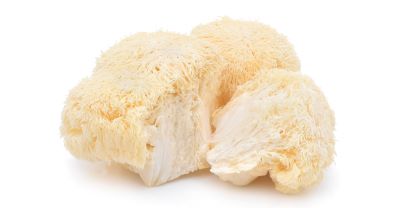 The Hericium protects and strengthens through its ingredients quite particularly the nervous system. It is therefore predestined for the treatment of stress-related anxiety, restlessness, memory lapses as well as insomnia. These are all symptoms that are common during menopause and can be very well alleviated with this medicinal mushroom. In addition to its relaxing and sleep-inducing properties, this vital mushroom also has an antidepressant effect.
The Hericium protects and strengthens through its ingredients quite particularly the nervous system. It is therefore predestined for the treatment of stress-related anxiety, restlessness, memory lapses as well as insomnia. These are all symptoms that are common during menopause and can be very well alleviated with this medicinal mushroom. In addition to its relaxing and sleep-inducing properties, this vital mushroom also has an antidepressant effect.
In addition, it has a soothing and regenerative effect on the mucous membranes in the gastrointestinal tract. This is also a valuable aid for menopausal women. Finally, deficiencies and discomfort often occur here as well due to declining hormone production – especially due to the lack of estriol. Moreover, the prebiotic ingredients of Hericium promote a healthy intestinal environment.
Polyporus
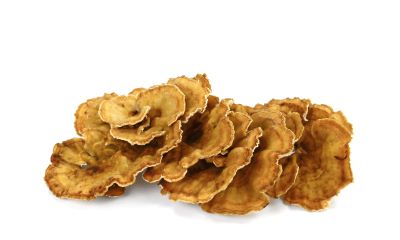 If edema is present due to hormonal imbalance, this medicinal mushroom acts as a natural diuretic (drainage agent). Good to know here: Unlike other dehydrating agents, its administration does not lead to the excretion of the so valuable mineral potassium.
If edema is present due to hormonal imbalance, this medicinal mushroom acts as a natural diuretic (drainage agent). Good to know here: Unlike other dehydrating agents, its administration does not lead to the excretion of the so valuable mineral potassium.
In addition, polyporus is also used in naturopathy with good success in skin diseases, the cause of which is an overload of the lymphatic system. The vital mushroom relieves the lymphatic system by supporting detoxification via kidney and bladder. Likewise, it helps with acne and skin blemishes, which can be caused by excess testosterone. Polyporus, through its ingredients, stimulates the polporusterone, hair growth, thereby counteracting the hair loss that often occurs during menopause.
Poria Cocos
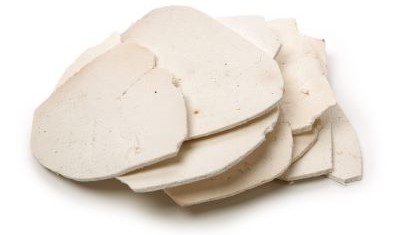 The vital mushroom Poria cocos also has a draining effect. Thus, it helps to eliminate congestion that may be caused by hormonal imbalances. Likewise, it develops a calming effect and is beneficial for sleep disorders. Furthermore, the Poria cocos is characterized by a special reference to the heart. Therefore, it is also beneficial for tachycardia or arrhythmia.
The vital mushroom Poria cocos also has a draining effect. Thus, it helps to eliminate congestion that may be caused by hormonal imbalances. Likewise, it develops a calming effect and is beneficial for sleep disorders. Furthermore, the Poria cocos is characterized by a special reference to the heart. Therefore, it is also beneficial for tachycardia or arrhythmia.
Auricularia
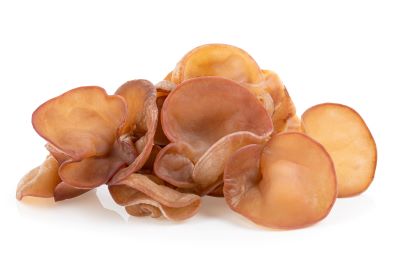 Auricularia is traditionally used in TCM for dryness and helps to moisten the mucous membranes. Especially during menopause, this is a valuable support. Finally, with the onset of this phase of life, the mucous membranes become noticeably drier and more sensitive. The mucous membranes of the vagina and urinary tract are particularly affected. Many women also complain of dry eyes during this time.
Auricularia is traditionally used in TCM for dryness and helps to moisten the mucous membranes. Especially during menopause, this is a valuable support. Finally, with the onset of this phase of life, the mucous membranes become noticeably drier and more sensitive. The mucous membranes of the vagina and urinary tract are particularly affected. Many women also complain of dry eyes during this time.
Auricularia is not directly a natural remedy for hot flashes, but it does relieve severe sweating. Likewise, it can regulate heavy menstrual bleeding.
Maitake
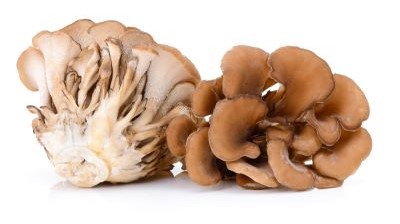 In postmenopause, the bones and cardiovascular system increasingly suffer from the change in hormones. Both estrogen and progesterone are instrumental in maintaining bone health. Reduced levels of these two sex hormones promote bone loss. Here, the intake of the vital mushroom Maitake has proven its worth. It promotes the activity of osteoblasts (bone-building cells) and can thus counteract a reduction in bone density. In addition, it has a uric acid-lowering effect, which benefits the bones, but especially the joints.
In postmenopause, the bones and cardiovascular system increasingly suffer from the change in hormones. Both estrogen and progesterone are instrumental in maintaining bone health. Reduced levels of these two sex hormones promote bone loss. Here, the intake of the vital mushroom Maitake has proven its worth. It promotes the activity of osteoblasts (bone-building cells) and can thus counteract a reduction in bone density. In addition, it has a uric acid-lowering effect, which benefits the bones, but especially the joints.
Furthermore, maitake stimulates the metabolism. Thus, it helps to prevent unwanted weight gain. Its cholesterol- and triglyceride-lowering effect can also reduce the risk of cardiovascular disease and diabetes.
What other natural remedies help with menopausal symptoms?
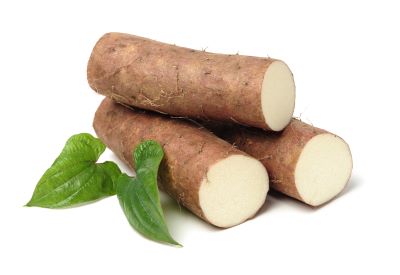 In addition to medicinal mushrooms, the typical women’s herbs lady’s mantle, yarrow, monk’s pepper, and silver primrose can alleviate menopausal symptoms. Wild yam contains diosgenin, which has a similar effect in the body as progesterone and stimulates the adrenal glands to produce more DHEA. Phytoestrogens (secondary plant compounds), which exert a mild estrogen-like effect on the body, are also helpful. They gently protect vessels and bones without promoting tumor growth. They are particularly abundant in the following plant foods: Soy, flaxseed, legumes, red clover, whole grains, buckwheat, hazelnuts and walnuts, sunflower seeds and in many fruits and vegetables.
In addition to medicinal mushrooms, the typical women’s herbs lady’s mantle, yarrow, monk’s pepper, and silver primrose can alleviate menopausal symptoms. Wild yam contains diosgenin, which has a similar effect in the body as progesterone and stimulates the adrenal glands to produce more DHEA. Phytoestrogens (secondary plant compounds), which exert a mild estrogen-like effect on the body, are also helpful. They gently protect vessels and bones without promoting tumor growth. They are particularly abundant in the following plant foods: Soy, flaxseed, legumes, red clover, whole grains, buckwheat, hazelnuts and walnuts, sunflower seeds and in many fruits and vegetables.
What should I look for when choosing vital mushrooms?
We have now presented to you in detail various vital mushrooms as helpers from nature during menopause. Within this range of different mushrooms, each woman must find her individual ideal combination. To find your own perfect blend of vital mushrooms, please contact our experts who will assist you with their expertise in this task.
However, it is not only in the selection of your vital mushrooms that you should exercise caution. Make sure that German organic standards are met when growing the mushrooms. These are commonly very strict guidelines for growing plants and mushrooms without pollutants. This is all the more important because fungi soak up toxins from their environment like sponges. Pesticides, fertilizers and polluted substrates thus enter your body almost unchanged and can cause more damage than the vital mushrooms show health-promoting effects.
To be sure that all valuable ingredients are contained in the medicinal mushrooms, gentle processing is enormously important. Drying and also grinding must therefore take place at below 40° Celsius. Otherwise, important enzymes and other substances will break down. In addition, the whole mushroom must always be processed into powder. Some substances, for example, are found only in the mycelium, others only in the fruiting bodies.
Finally, capsules have proven to be the ideal storage and dosing method. The cover reliably protects the powder from moisture. This puts a stop to unwanted mold growth. Unfortunately, this is particularly difficult to recognize on the fine powder. Capsules are also very convenient to take, as they can simply be swallowed in the desired amount with a glass of water or tea.

Every person is unique!
Our experienced team will be happy to advise you in detail and free of charge on all matters relating to your health.
DO YOU HAVE ANY QUESTIONS?
We will gladly take time for you. In our free consultation we answer individually and personally all your health questions under:
Scientific studies / sources
- Prof. Dr. med Ivo Bianchi: “Modern Mycotherapy”; Hinckel-Druck 2008
- Dr. med. Christiane Northrup: “Wisdom of the Menopause”; Zabert Sandmann; Munich 2005
- Siegfried Kiontke, Mechthild Rex-Najuch, Hartmut Horn: “Operating temperature 37 degrees Celsius”; Vitatec Verlagsgesellschaft
- Dr.med. Michael E. Platt: “The Hormone Revolution”; VAK Verlags GmbH, Kirchzarten 2009
- John R. Lee: “Natural Progesterone, A Remarkable Hormone”; AKSE-Verlag, Munich 1997
- Dr.med. A. Scheuernstuhl/A. Hild: “Natural Hormone Therapy”; Aurum in J. Kamphausen Verlag, Bielefeld 2010
- M. Madejski: “Lexikon der Frauenkräuter”; AT-Verlag, 3rd edition 2010
